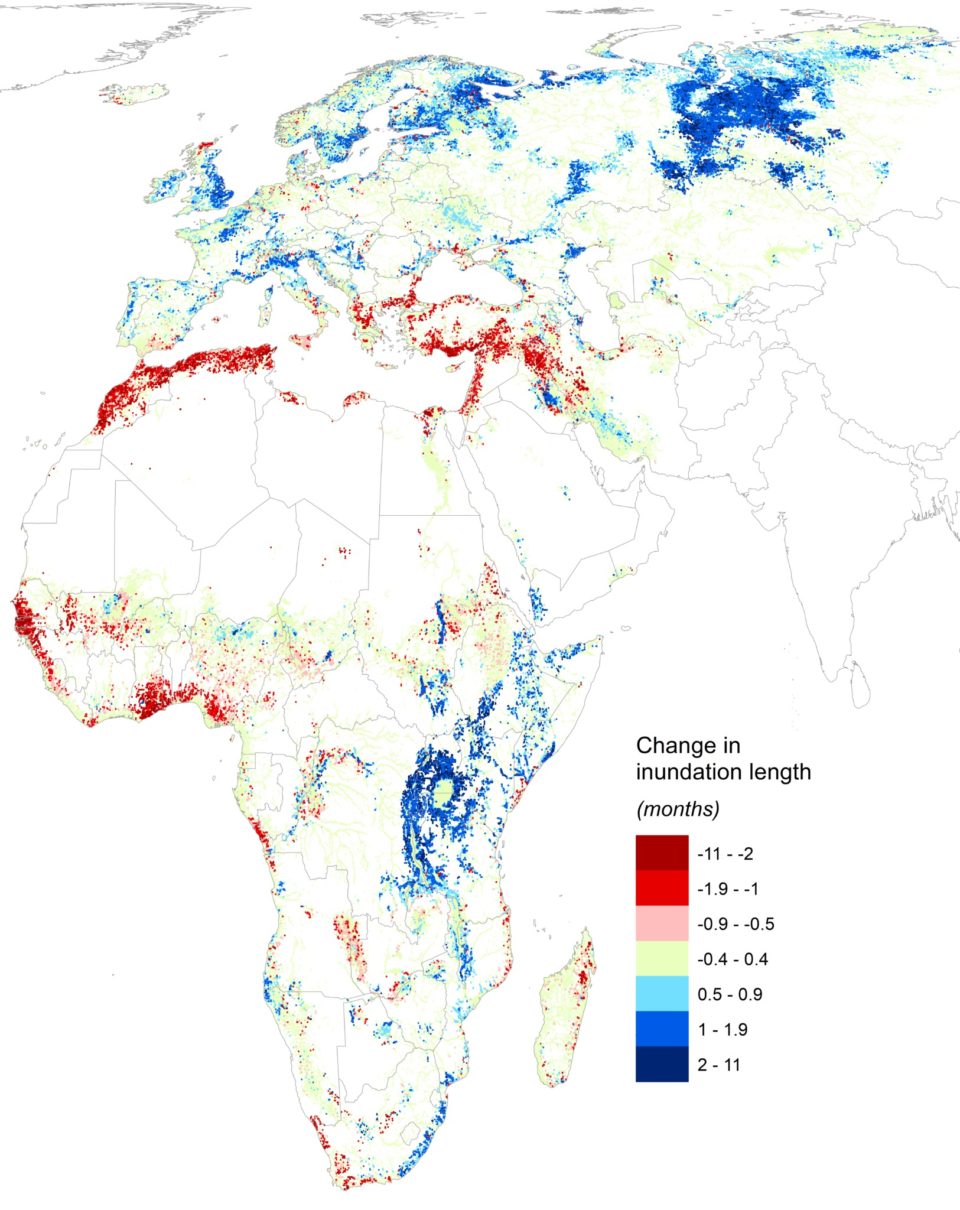
Climate change adaptation and waterbirds: a more integrated approach is needed
-
Species
Lake Abijatta, Ethiopia, one of the Critical Sites where the Climate Resilient Flyway Project is working. It has been slowly drying out and losing its importance for waterbirds because of unsustainable water extraction in its catchment.

Migratory waterbirds traverse thousands of kilometres annually between their breeding and non-breeding areas, and their conservation is the subject of numerous inter-governmental treaties. Studies based on monitoring of birds already show that waterbirds are changing their distribution in response to climate change.
Five years ago, with the support of the International Climate Initiative (ICI) and the AEWA Secretariat, we set out to assess the exposure of the AEWA-listed waterbird species to climate change. We embarked on the first assessment covering an entire flyway, including 120 countries and 197 of the 255 AEWA species. For this assessment, we wanted to capture that availability of waterbird habitats in the future will depend not only on changes in local climate but also on hydrological changes upstream in the catchment. Therefore, we teamed up with the Universities of McGill (Canada), Wisconsin-Madison (USA) and Kassel (Germany), who modelled the change in the extent and duration of inundation between 2000 and 2050. The current and future habitat distribution were modelled based on remote sensing data and a global hydrological model based two climate models (HadGEM2-ES and IPSL-CM5A-LR), each using the same Representative Concentration Pathway RCP 6.0 as climate forcing. The hydrological models project that the Mediterranean, Southwest Asia, West Africa and Southern Africa are likely to experience the greatest reduction in inundation.

We used predicted hydrological and climatic change to evaluate the impact of changes across the geographic distribution of each 197 species. We also evaluated changes in the suitability of 3,047 Critical Sites that had been previously identified as sites supporting a one or more globally threatened waterbird species or >1% of a biogeographic population of a waterbird species.
Our results suggest that the largest projected range contractions will primarily affect species breeding in the High Arctic as well as Afrotropical species. The latter is a surprising finding since these species were previously thought to be less vulnerable. Our projected species distribution show declines in the number of species in areas with substantial hydrological changes, in particular those undergoing reductions in inundated habitat. The regions experiencing the strongest declines are: the Mediterranean, Southwest Asia and Southern Africa. However, species numbers are projected to decline in Eastern Africa more than would be expected based on the hydrological data alone due to other bioclimatic factors.

As most waterbirds are too dispersed during their breeding seasons for their breeding grounds to qualify exceed the thresholds for identifying Critical Sites, our study suggests that climate change adaptation measures, such as controlling drainage for agriculture and forestry, and restoration of drained wetlands, will be necessary at the landscape scale (rather than simply for individual protected areas and other sites). This will require land-use policies that support such measures.
The significant mismatch between the areas where climate change adaptation measures are most needed and those with adequate financial and technical capacity is a major challenge that remains to be addressed. In addition, countries where waterbirds are most exposed to climate change will also face climate change adaptation challenges for their human population. There is a huge risk of “maladaptation” if the countries and donor agencies focus on increased irrigation and similar technical solutions. Therefore, it is essential that donors supporting climate change adaptation apply a more integrated approach to food- and water security, disaster risk reduction and biodiversity conservation, focusing on nature-based solutions that deliver benefits both for people and biodiversity.
The results for each species and site are available on the Critical Site Network Tool 2.0. at http://criticalsites.wetlands.org/en.
The article Climate change exposure of waterbird species in the African-Eurasian flyways by Szabolcs Nagy, Frank T. Breiner, Mira Anand, Stuart H. M. Butchart, Martina Flörke, Etienne Fluet-Chouinard, Antoine Guisan, Lammert Hilarides, Victoria R. Jones, Mikhail Kalyakin, Bernhard Lehner, James W. Pearce-Higgins and Olga Voltzit is available in Bird Conservation International as an open access paper. Click here to access it.
Photo: Szabolcs Nagy
